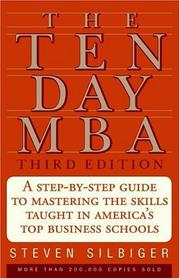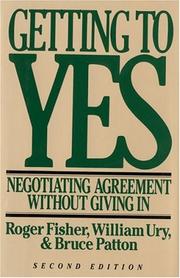Blue Ocean Strategy by W. Chan Kim & Renée Mauborgne - ISBN 1591396190 - Harvard Business School Press 2005
Motivation
Will be discussed during MBE04.
Pre-reading model
Competition, especially competition over prices, can be extremely damaging. Different strategies, including less confrontational ones, can be more efficient based on the type of market which is the result of its intrinsic nature (type of product, technology based or not, oligopolistic, etc).
Reading
Part One: Blue Ocean Strategy
- 1 Creating Blue Oceans
- "market universe composed of two sorts of oceans: red oceans and blue oceans.
- Red oceans represent all the industries in existence today. This is the known market space.
- Blue oceans denote all the industries not in existence today. This is the unknown market space." (p4)
- "This book provides practical frameworks and analytics for the systematic pursuit and capture of blue oceans." (p5)
- "To focus on the red ocean is therefore to accept the key constraining factors of war—limited terrain and the need to beat an enemy to succeed—and to deny the distinctive strength of the business world: the capacity to create new market space that is uncontested." (p7)
- "niche markets and havens for monopoly continue to disappear"
- a niche market is probably a very limited in size red ocean
- reference to In Search of Excellence and Built to Last and statistics on the low rate of sustainability of companies they studied
- also comparison with the average rate of the industry sector
- focusing on the analysis of strategic moves rather than industries or companies
- "A strategic move is the set of managerial actions and decisions involved in making a major market-creating business offering." (p10)
- "value innovation [...] instead of focusing on beating the competition, you focus on making the competition irrelevant by creating a leap in value for buyers and your company, thereby opening up new and uncontested market space" (p12)
- redefined with a schema figure 1-2 (p16)
- Value Innovation animated schema from BOS tools at BlueOceanStrategy.com
- "Value innovation occurs only when companies align innovation with utility, price, and cost positions. If they fail to anchor innovation with value in this way, technology innovators and market pioneers often lay the eggs that other companies hatch." (p13)
- Red Ocean vs Blue Ocean animated schema from BOS tools at BlueOceanStrategy.com
- using Le Cirque du Soleil as the main example throughout the chapter
- concluding the chapter with the description of each chapter of the book
- the remark that hitech companies tend to overshoot the need of the users because of their competitive arm-race on technological innovation opposed to value innovation seems to be coherent with The Innovators Dilemma
- 2 Analytical Tools and Frameworks
- Strategy Canvas animated schema from BOS tools at BlueOceanStrategy.com
- using the US wine industry, in paricular [yellow tail], as the main example throughout the chapter
- 4 Actions Framework animated schema from BOS tools at BlueOceanStrategy.com
- Eliminate-Reduce-Raise-Create Grid (ERRC) Grid animated schema from BOS tools at BlueOceanStrategy.com
- "a good way to test the effectiveness and strength of a strategy is to look at whether it contains a strong and authentic tagline." (p40)
Part Two: Formulating Blue Ocean Strategy
- 3 Reconstruct Market Boundaries
- "The more that companies share this conventional wisdom about how they compete, the greater the competitive convergence among them." (p48)
- 6 paths framework , Look Accross :
- Alternative Industries
- "the space between alternative industries provides opportunities for value innovation. " (p50)
- "What are the alternative industries to your industry? Why do customers trade across them? By focusing on the key factors that lead buyers to trade across alternative industries and eliminating or reducing everything else, you can create a blue ocean of new market space." (p55)
- Strategic Groups Within Industries
- "What are the strategic groups in your industry? Why do customers trade up for the higher group, and why do they trade down for the lower one? " (p61)
- the Chain of Buyers
- "What is the chain of buyers in your industry? Which buyer group does your industry typically focus on? If you shifted the buyer group of your industry, how could you unlock new value" (p65)
- Complementary Product and Service Offerings
- "What is the context in which your product or service is used? What happens before, during, and after? Can you identify the pain points? How can you eliminate these pain points through a complementary product or service offering? " (p69)
- Functional or Emotional Appeal to Buyers
- "Does your industry compete on functionality or emotional appeal? If you compete on emotional appeal, what elements can you strip out to make it functional? If you compete on functionality, what elements can be added to make it emotional? " (p75)
- Time
- "What trends have a high probability of impacting your industry, are irreversible, and are evolving in a clear trajectory? How will these trends impact your industry? Given this, how can you open up unprecedented customer utility? " (p79)
- 4 Focus on the Big Picture, Not the Numbers
- discussing consultancy sessions
- explaining why the canvas should be a synthetic tool
- Pioneer-Migrator-Settler Map animated schema from BOS tools at BlueOceanStrategy.com
- 5 Reach Beyond Existing Demand
- 3 Tiers of Noncustomers animated schema from BOS tools at BlueOceanStrategy.com
- First-Tier Noncustomers
- "These soon-to-be noncustomers are those who minimally use the current market offerings to get by as they search for something better" (p105)
- Second-Tier Noncustomers
- "What are the key reasons second-tier noncustomers refuse to use the products or services of your industry? Look for the commonalities across their responses." (p109)
- Third-Tier Noncustomers
- "their needs and the business opportunities associated with them have somehow always been assumed to belong to other markets." (p110)
- "when your competitors succeed in attracting the mass of noncustomers with a value innovation move, many of your existing customers may be attracted away because they too may be willing to put their differences aside to gain the offered leap in value. " (p115)
- 6 Get the Strategic Sequence Right
Part Three: Executing Blue Ocean Strategy
- 7 Overcome Key Organizational Hurdles
- 4 Hurdles to Execution animated schema from BOS tools at BlueOceanStrategy.com
- "Conventional wisdom asserts that the greater the change, the greater the resources and time you will need to bring about results." (p148)
- Conventional Wisdom vs Tipping Point Leadership animated schema from BOS tools at BlueOceanStrategy.com
- "Hot spots are activities that have low resource input but high potential performance gains." (p156)
- "cold spots are activities that have high resource input but low performance impact." (p156)
- Three ε Principles of Fair Process animated schema from BOS tools at BlueOceanStrategy.com
- "fair process signals to people that there is a level playing field and that leaders value employees’ intellectual and emotional worth despite all the change that may be required." (p164)
- "Not every challenge requires a proportionate action. Focus on acts of disproportionate influence." (p169)
- 8 Build Execution into Strategy
- "when individuals are treated with emotional recognition, they feel emotionally tied to the strategy and inspired to give their all." (p182)
- "By organizing the strategy formulation process around the principles of fair process, you can build execution into strategy making from the start. With fair process, people tend to be committed to support the resulting strategy even when it is viewed as not favorable or at odds with their perception of what is strategically correct for their unit. " (p184)
- 9 Conclusion: The Sustainability and Renewal of Blue Ocean Strategy
- "A blue ocean strategy brings with it considerable barriers to imitation." (p185)
- that this book is lowering?
- "almost every blue ocean strategy will be imitated." (p188)
- "To avoid the trap of competing, you need to monitor value curves on the strategy canvas" (p188)
- "As competitors’ value curves converge toward yours, you should begin reaching out for another value innovation to create a new blue ocean. " (p189)
See also
Overall remarks and questions
- can this be compared to a chessboard with a very hot middle?
- the middle is crucial to master but also very costly
- what is the difference between strategists advocating their own work and other belief systems?
- paradigmatic examples, dataset and their analysis, are all provided by advocate of the strategy, the authors
- Wikipedia:Blue Ocean Strategy#Criticisms

- e.g. if everybody applies BOS, wouldn't it just create a middle ground segments in the Strategy Canvas?
- it seems not since it also "extends" the curve by providing new differentiation criteria
- add the poster made by Sylvain on Porter's Competitive Strategy
Synthesis
So in the end, it was about X and was based on Y.
Critics
Point A, B and C are debatable because of e, f and j.
Quizz
- question simple ?
- question complexe ?
- question choix multiple : A ? B ? C ?
To consider as a collaboration with Franck Brignoli and his PIM for MemoryRecipe
Vocabulary
(:new_vocabulary_start:)
new_word
(:new_vocabulary_end:)
Post-reading model
Draw a schema (using PmGraphViz or another solution) of the situation of the area in the studied domain after having read the book. Link it to the pre-reading model and align the two to help easy comparison.
Categories
Back to the Menu
Other read books linking to the BlueOceanStrategy page :
Back to the Menu
 Fabien Benetou's PIM
Fabien Benetou's PIM








